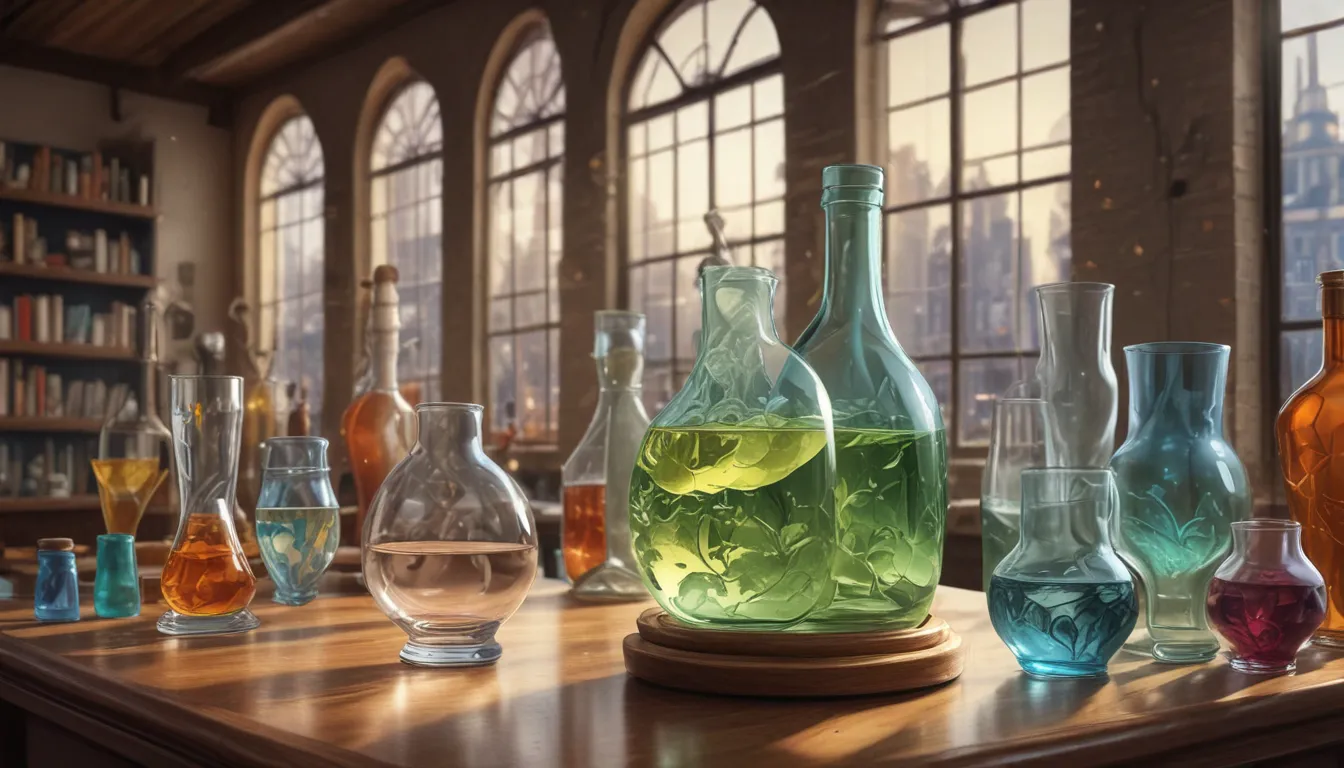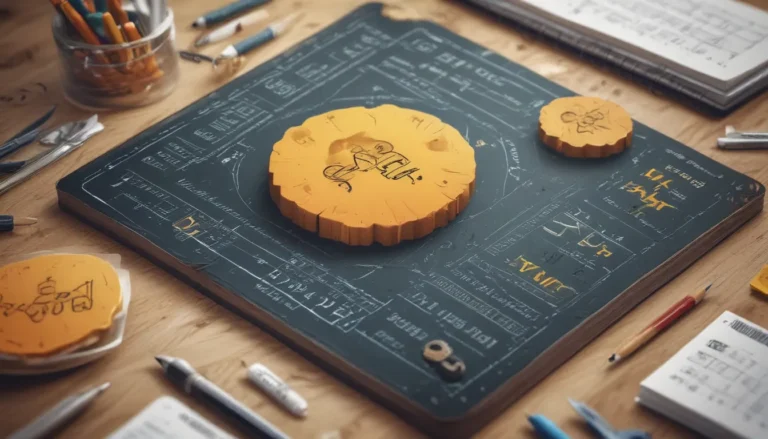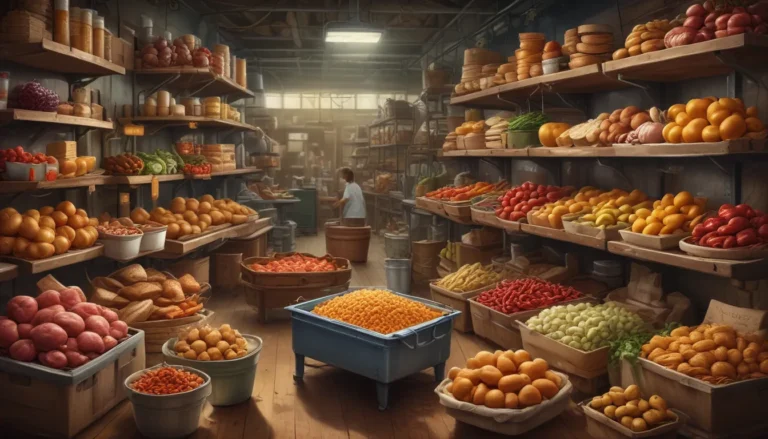A Note About Images: The images used in our articles are for illustration purposes only and may not exactly match the content. They are meant to engage readers, but the text should be relied upon for accurate information.
Glass is a material that has fascinated humans for centuries, from its ancient origins to its modern-day innovations. In this article, we will delve into the rich history, properties, and diverse uses of glass, uncovering 19 intriguing facts that shed light on its significance in our lives.
Glass: A Journey through Time
Glass has a long and storied history that dates back to ancient civilizations. Originating in Mesopotamia around 3500 BCE, the earliest known glass objects were primarily decorative, such as beads and small vessels. These objects were crafted by mixing sand, soda, and lime, laying the foundation for the art of glassmaking.
The Artistry of Glassblowing
One of the most significant advancements in glass production was the invention of glassblowing. Developed by the Phoenicians in the 1st century BCE, glassblowing revolutionized the industry by allowing artisans to shape molten glass into intricate forms. Today, skilled artisans around the world continue to use these ancient techniques to create stunning glass pieces.
The Allure of Glass Transparency
A defining characteristic of glass is its transparency, allowing light to pass through with minimal distortion. Unlike many other materials, glass lacks a crystalline structure, enabling it to transmit light and offer a clear view of the world beyond. This unique property has made glass a popular choice for windows, lenses, and various other applications.
An Array of Glass Types
Glass comes in a diverse range of forms and compositions, each with its own distinct properties. Common types of glass include soda-lime glass, borosilicate glass, tempered glass, and laminated glass, each tailored for specific uses and applications. From everyday objects like bottles and windows to specialized fields like optics and fiber optics, glass proves to be an indispensable material.
Glass: Transforming Architecture
The impact of glass on architecture cannot be overstated. The development of large-scale glass manufacturing techniques in the 19th century paved the way for iconic structures like the Crystal Palace in London. Today, glass is widely integrated into modern architecture to create innovative designs, sleek facades, and expansive windows that define contemporary buildings.
Glass: A Material of Endless Possibilities
Glass’s remarkable versatility is evident in its widespread use across numerous industries. From household items like bottles and mirrors to specialized applications in electronics and fiber optics, glass proves to be an adaptable and indispensable material. Its unique properties and adaptability make it a preferred choice in a wide array of applications.
The Role of Fiberglass in Various Industries
Fiberglass, a type of glass-reinforced plastic, finds extensive use in industries like construction, automotive, and aerospace. Composed of fine glass fibers embedded in a polymer matrix, fiberglass boasts a lightweight yet strong composition. Its exceptional strength-to-weight ratio makes it an ideal material for applications such as boat construction, automobile bodies, and aircraft components.
Glass: A Sustainable Choice
Glass is hailed as a sustainable material due to its recyclability. Unlike many materials, glass can be recycled endlessly without losing its quality, making it an environmentally friendly option. By recycling glass, we can reduce the demand for raw materials and minimize waste accumulation in landfills, contributing to a more sustainable future.
The Enchantment of Stained Glass
Stained glass, known for its vibrant colors and intricate designs, has captivated people for centuries. Originating in medieval Europe, stained glass adorned the windows of churches and cathedrals, showcasing elaborate scenes and religious motifs. This art form involves adding metallic salts to molten glass, resulting in dazzling colors and artistic expressions.
Glass: A Window to Scientific Discoveries
Glass plays a vital role in scientific research, particularly in the manufacturing of laboratory equipment like beakers, test tubes, and Petri dishes. Its transparency and inert nature make it an ideal material for containing and observing chemical reactions, biological samples, and various scientific experiments.
The Strength of Tempered Glass
Tempered glass, a type of safety glass, offers exceptional resistance to impact and thermal stress. Created by heating ordinary glass to high temperatures and rapidly cooling it, tempered glass gains strength from internal stresses. Widely used in car windows, shower doors, and mobile phone screens, tempered glass ensures safety and durability in various applications.
Discovering Murano Glass: A Masterpiece of Craftsmanship
Murano Glass, renowned for its exceptional craftsmanship and intricate designs, traces its origins to the island of Murano in Venice, Italy. With a history spanning over 700 years, Murano glass artisans employ traditional techniques to create breathtaking glassware, including vases, chandeliers, and decorative sculptures. The artistry and craftsmanship of Murano glass continue to captivate art enthusiasts worldwide.
Glass Recycling: A Sustainable Solution
Glass recycling plays a crucial role in waste management and sustainability efforts. When glass is recycled, it is crushed into a cullet, which can then be used to manufacture new glass products. This process helps conserve resources, reduce energy consumption, and minimize waste sent to landfills, promoting a more sustainable and eco-friendly approach to glass usage.
The Reflective Power of Mirrors
Mirrors have long been utilized to reflect and enhance our surroundings. By applying a reflective coating to one side of a glass pane, mirrors can reflect light and create clear images. The smooth surface of glass allows light to bounce off at the same angle, resulting in accurate and crisp reflections that enhance various spaces.
Unveiling the Wonders of Fiber Optics
Fiber optics, a technology that relies on the transmission of light through thin glass or plastic fibers, has revolutionized communication systems. Widely used in telecommunications, internet connectivity, and medical imaging, fiber optic cables enable rapid data transmission over long distances. The efficiency and reliability of fiber optics have transformed how information is transmitted and received in the digital age.
Glass Optics: Exploring the Universe
Telescopes and observatories leverage glass optics to capture and magnify celestial wonders. Lenses and mirrors made of high-quality glass ensure optimal clarity and minimal distortion, allowing astronomers to study celestial objects with remarkable precision. Glass optics play a vital role in unlocking the mysteries of the universe and expanding our understanding of the cosmos.
The Artistry of Glass: A Marriage of Skill and Imagination
Glass art combines technical expertise with artistic expression to create captivating works of art. Artists utilize various techniques such as glassblowing, fusing, and slumping to shape and manipulate glass into intricate sculptures, vases, and installations. The interplay of light and color in glass art produces a mesmerizing visual experience, captivating audiences with its beauty and creativity.
Glass in Electronics: A Seamless Integration
Glass has found its place in the electronics industry, particularly in the form of display screens and optical fibers. Liquid crystal displays (LCDs) and organic light-emitting diode (OLED) screens, prevalent in televisions, smartphones, and computers, rely on thin glass substrates for clarity and durability. The incorporation of glass in electronics ensures clear visuals and reliable performance in various devices.
Innovations in Glass: Paving the Way for the Future
Glass continues to drive innovation and push the boundaries of possibility. Researchers and engineers are constantly developing new glass compositions with enhanced properties, such as increased strength and flexibility. These advancements open up exciting prospects in fields like renewable energy, medicine, and transportation, showcasing the limitless potential of glass in shaping the future.
In Conclusion
Glass, with its rich history, diverse applications, and sustainable properties, stands as a material that has left an indelible mark on our world. From its ancient origins to its contemporary uses, glass continues to inspire and captivate with its beauty and functionality. Whether in architecture, art, or science, glass remains a versatile and indispensable material that shapes our lives in profound ways.
Frequently Asked Questions (FAQs)
Is glass a solid or a liquid?
While glass is commonly referred to as a “supercooled liquid,” it is technically classified as an amorphous solid. Unlike crystalline solids, glass does not possess a regular atomic structure, giving it unique properties.
Can glass break under extreme temperatures?
Glass is susceptible to breakage under extreme temperature changes due to thermal stress. Rapid heating or cooling can cause uneven expansion or contraction, leading to potential breakage. Tempered glass is specifically designed to withstand thermal stress better than regular glass.
What is the primary ingredient in glass?
Silica, also known as silicon dioxide, is the primary ingredient in glass. Obtained from sand, silica is combined with other materials like soda ash and limestone to create glass with specific properties.
Can glass be recycled indefinitely?
Yes, glass can be recycled endlessly without any loss in quality. Recycling glass helps conserve resources, reduce energy consumption, and minimize waste sent to landfills. Separating glass by color during recycling helps maintain its purity.
What is safety glass?
Safety glass is a type of glass designed to minimize the risk of injury upon breakage. Tempered glass and laminated glass are commonly used as safety glasses. Tempered glass shatters into small, harmless pieces, while laminated glass remains intact even when broken.
As we continue our exploration of the world of glass, we invite you to discover the beauty, versatility, and sustainability of this remarkable material. Embrace the enchanting world of glass and witness how it shapes our lives, inspires creativity, and drives innovation across various industries.






